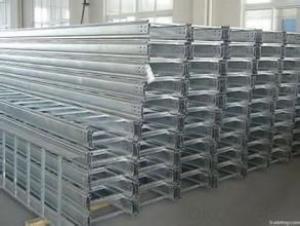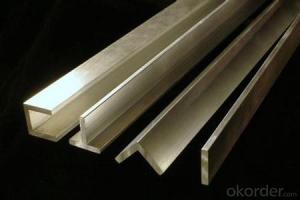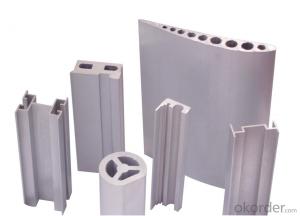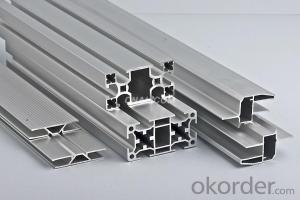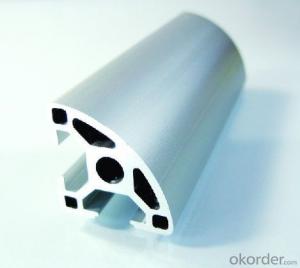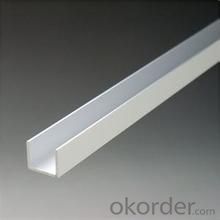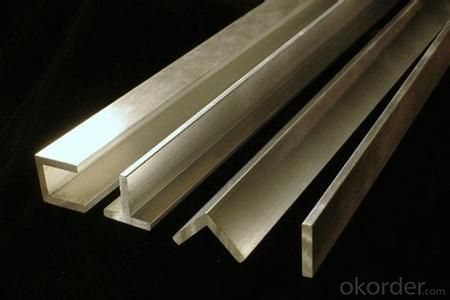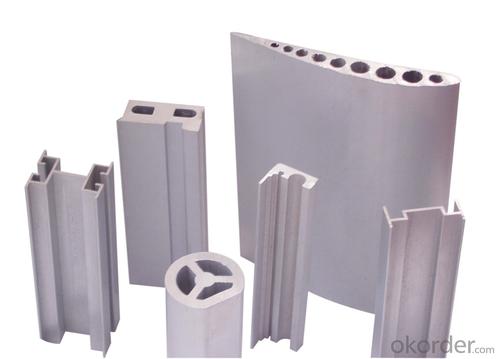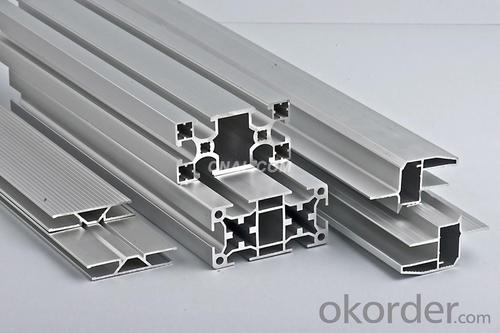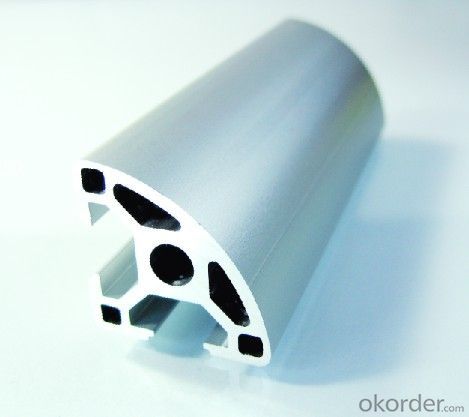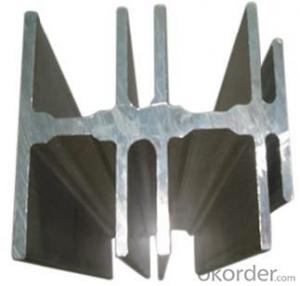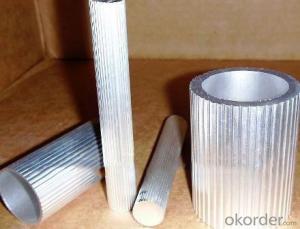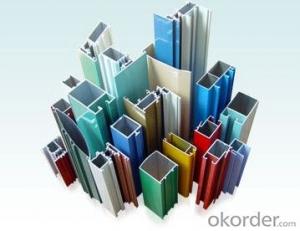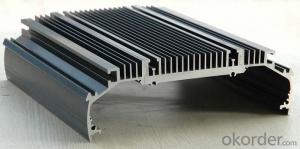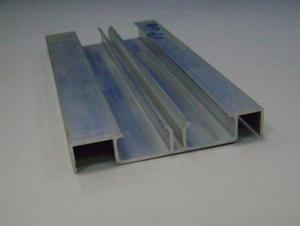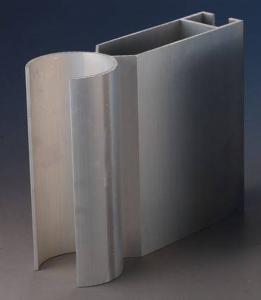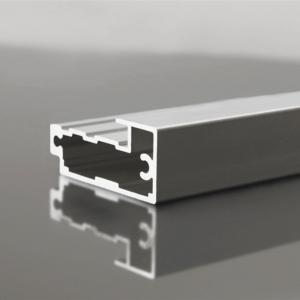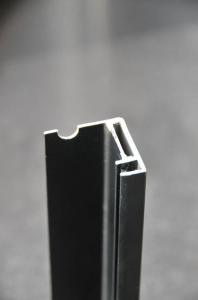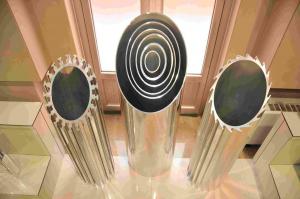Aluminum Extrusion Profiles Philippines - Various Surface Treatment Grade Top Industrial Aluminium Profile Extrusion
OKorder Service Pledge
OKorder Financial Service
You Might Also Like
Aluminium is a relatively soft, durable, lightweight, ductileand malleablemetalwith appearance ranging from silvery to dull gray, depending on the surfaceroughness. It is nonmagnetic and does not easily ignite. A fresh film ofaluminium serves as a good reflector (approximately 92%) of visible lightand an excellent reflector (as much as 98%) of medium and far infraredradiation. The yield strength of pure aluminium is 7–11 MPa,while aluminium alloys have yield strengths ranging from200 MPa to 600 MPa. Aluminium has about one-third the densityand stiffness of steel. It is easily machined,cast, drawn and extruded.
Features:
Material | Alloy 6063,6061,6005or according to customer’s choice |
Temper | T3, T4, T5, T6 |
Surface | Anodize, electrophoresis, powder coating, PVDF coating, wood grain painting, matted, etc. |
Length | Coating 6.5 meters, Anodizing 6.5 meters, Mill finish 5 meters |
Application | Industrial, electrical equipment(TV set, air conditioner, refrigerator, computer), decoration,construction, transportation |
Custom Made | We can package following with customer's request. |
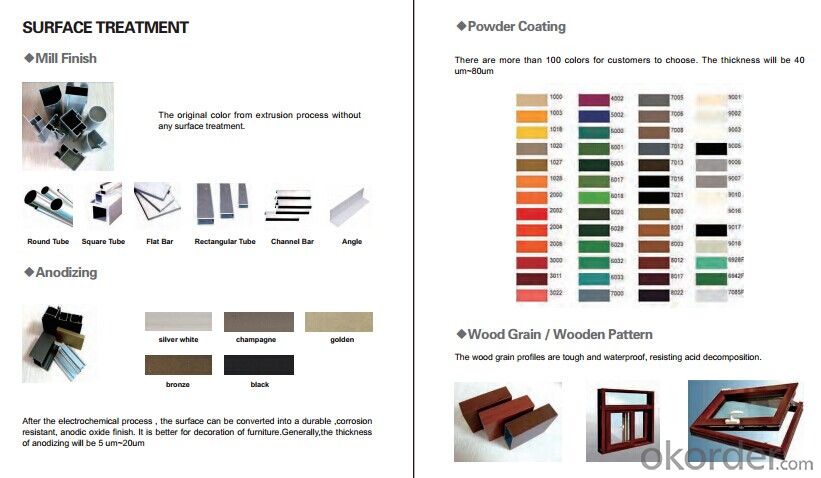
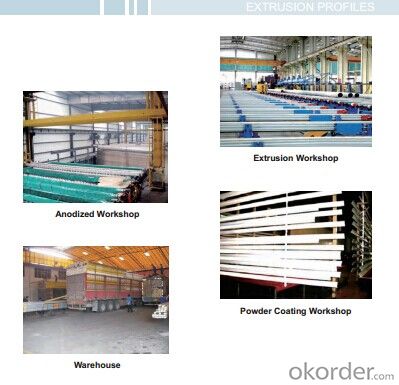

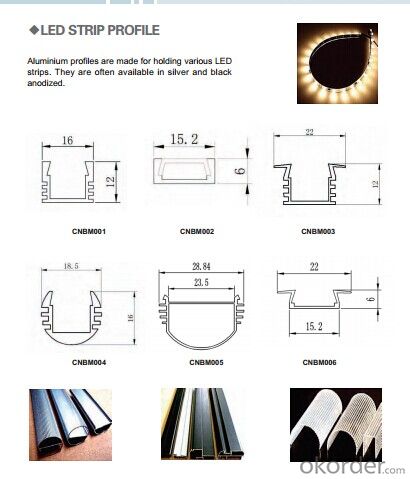
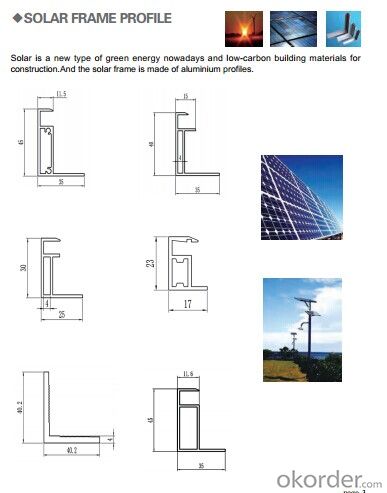

- Q: This question asks for various methods of producing aluminum profiles in a manner that is both efficient and cost-effective.
- <p>Efficient and cost-effective manufacturing of aluminum profiles can be achieved through several methods: 1) Using advanced extrusion technology, which is the primary method for shaping aluminum profiles, allows for high production rates and consistent quality. 2) Implementing automation in the production process to reduce labor costs and increase output. 3) Employing recycling techniques to use scrap aluminum, which lowers material costs and is environmentally friendly. 4) Optimizing the design of profiles to reduce material usage without compromising strength. 5) Utilizing energy-efficient equipment and processes to minimize energy consumption. 6) Regular maintenance and upgrading of machinery to ensure operational efficiency and reduce downtime. 7) Implementing just-in-time inventory management to minimize storage costs and reduce waste. 8) Continuous improvement through research and development to find new, more efficient methods of production.</p>
- Q: Who would like to know, aluminum radiator mainly used in which instruments or equipment, trouble to say more detailed points, thank you
- Large, such as ZTE, HUAWEI communications control center, as well as the main table server, large cabinet
- Q: This question asks for guidelines to ensure the safe and efficient installation of aluminum profiles.
- <p>To ensure the safe and effective installation of aluminum profiles, follow these steps: 1. Use high-quality aluminum profiles that meet the required specifications. 2. Accurately measure and mark the installation locations. 3. Use appropriate tools and equipment for cutting, drilling, and fastening. 4. Ensure the surface is clean, dry, and free of debris before installation. 5. Use the correct fasteners and follow the manufacturer's recommendations for torque settings. 6. Check for proper alignment and level during installation. 7. Regularly inspect and maintain the profiles to ensure they remain secure and functional. 8. Follow all safety precautions, including wearing protective gear and using secure work platforms.</p>
- Q: Can aluminum profiles be used in automotive applications?
- Yes, aluminum profiles can be used in automotive applications. Aluminum profiles are lightweight, strong, and corrosion-resistant, making them suitable for various automotive components such as body panels, chassis parts, and engine components. Their use helps reduce the overall weight of the vehicle, improving fuel efficiency and performance.
- Q: Can aluminum profiles be used in modular construction systems?
- Yes, aluminum profiles can be used in modular construction systems. Aluminum is a lightweight and durable material that is well-suited for modular construction. It provides structural stability and can be easily fabricated into various shapes and sizes to meet specific design requirements. Aluminum profiles offer excellent corrosion resistance, making them ideal for both indoor and outdoor applications. They are also highly recyclable, making them an environmentally-friendly choice for modular construction systems. Overall, aluminum profiles offer numerous advantages in terms of strength, flexibility, and sustainability, making them a popular choice in modular construction.
- Q: Is it possible to recycle aluminum profiles and repurpose them for construction purposes?
- <p>Yes, aluminum profiles can be recycled and reused as building materials. Aluminum is highly recyclable, and the recycling process requires significantly less energy compared to producing new aluminum from raw materials. Recycled aluminum maintains its strength and properties, making it suitable for various construction applications. This practice not only conserves natural resources but also reduces waste and environmental impact.</p>
- Q: What are the different tolerance levels for aluminum profiles?
- The specific requirements and applications can cause the tolerance levels for aluminum profiles to differ. Various industries, including automotive, aerospace, and construction, typically demand aluminum profiles with tight tolerance levels. Aluminum profiles commonly have dimensional tolerances, straightness tolerances, and surface finish tolerances. The dimensional tolerances ensure that the profile meets the required measurements and fits properly in its intended application. Typically, these tolerances are specified in millimeters or inches. Straightness tolerances guarantee that the aluminum profile does not deviate from a perfectly straight line. This is vital for maintaining structural integrity and accurate assembly. Surface finish tolerances determine the acceptable level of imperfections on the profile's surface, such as scratches, indentations, or roughness. These tolerances are often specified in terms of roughness average (Ra) or surface quality codes, like anodized or powder-coated finishes. It is crucial to consider that the tolerance levels for aluminum profiles can vary depending on factors such as the manufacturing process, intended application, and industry standards. Therefore, it is essential to consult relevant specifications, industry standards, or the supplier's guidelines to determine the precise tolerance levels for a specific aluminum profile.
- Q: Shenzhen aluminum profile manufacturers which good?
- Explain as follows: preparing goods, recruit a few operator, big online promotion can be opened. Those who are often hurt are our buyers. Miss wiring mostly do not know how to use, only know the unit price. How to use to meet customer needs; how to make the most cost-effective; in different venues that kind of connection is the best; these are they can not answer accurately. Only know the cheapest and recommended profile connection the cheapest; this connection is the lowest cost, but the cost of artificial, a connection is the weakest, aluminum convenience wouldn't be reflected, and will bring much trouble for the future reconstruction. But the wiring girl will push it one way.Third: in production of aluminium supplierExplain as follows: in the production of aluminum suppliers, are generally engaged in this industry for more than 10 years, and their users have very rich experience, have a good understanding and knowledge of the quality and performance of products, suitable for the requirement of the customers will recommend price is a good product, choose a convenient and practical accessories.
- Q: I would like to know where Urumqi has industrial aluminum profiles, such as 3030, 4040, 3060 aluminum, etc., note that industrial aluminum, not doors and windows, aluminum profiles, the difference between the two very large!
- And shares in the east railway station there, the east railway station and then go one Station Road (near the North Main Road) can see.
- Q: What are the various standards and regulations governing the use of aluminum profiles in construction?
- <p>Aluminum profiles in construction are governed by a variety of standards and regulations that ensure their quality, safety, and performance. These include ISO standards such as ISO 7039 for anodized aluminum and ISO 9001 for quality management systems. National standards like ASTM B221 in the USA and EN 755 in Europe specify mechanical properties and chemical composition. Building codes such as the International Building Code (IBC) and Eurocode 9 also provide guidelines for the use of aluminum in construction. Additionally, there are specific regulations for fire resistance, sustainability, and environmental impact, like the European CE marking for construction products. Compliance with these standards is crucial for manufacturers and builders to ensure the reliability and safety of aluminum profiles used in construction projects.</p>
Send your message to us
Aluminum Extrusion Profiles Philippines - Various Surface Treatment Grade Top Industrial Aluminium Profile Extrusion
OKorder Service Pledge
OKorder Financial Service
Similar products
Hot products
Hot Searches
Related keywords
